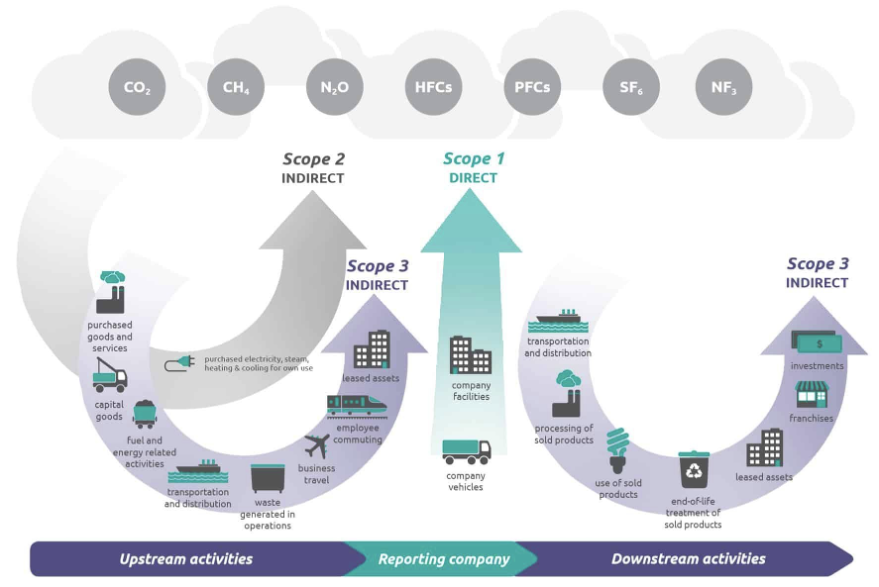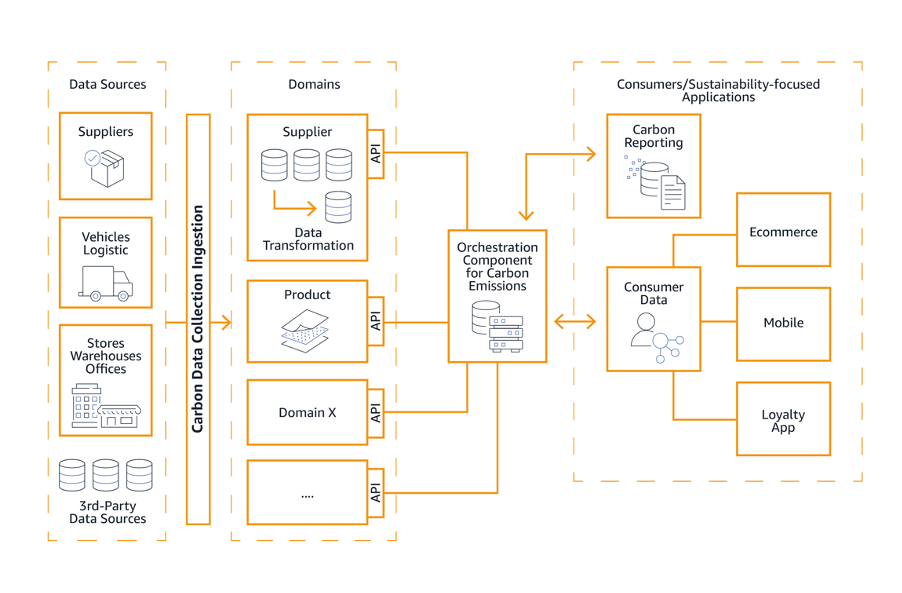AWS for Industries
Driving Sustainability in Retail through Transparent Measurement
With consumers increasingly making purchases based on the sustainability practices of a brand, retail brands are making public commitments to environmentally-friendly manufacturing and operating practices. Ten years ahead of the Paris Agreement, Amazon co-created the climate pledge in 2019 for organizations looking to be net-zero carbon by 2040, and over 100 enterprises have since signed up. Moreover, with COP26, the UN conference on global change, being hosted in the UK this year, there is a particular focus on environmental sustainability across the UK retail sector. By bringing the industry together to collaborate on approaches to reduce carbon emissions, the British Retail Consortium (BRC) published a public net zero roadmap for the retail industry that lists which brands have made a public commitment to sustainability.
But making a public commitment to sustainability is just the first step. Achieving the objectives that so many brands have committed to fulfilling requires transparent and careful measurement. As the old saying from management guru Peter Drucker goes, “You can’t manage what you can’t measure”.
Defining the Problem and Its Scope
Retail can reduce three tiers of carbon emissions—direct (Scope 1) and indirect, such as electricity or steam produced secondarily (Scope 2), as well as emissions that a company is indirectly responsible for, both up and down its value chain (Scope 3).
Reporting metrics in Scope 3 is the most challenging because of the amount and diversity of data sources involved. Scope 3 requires detecting emissions from all suppliers within the value chain, as well as customers’ handling and disposal of a retailer’s products. While this reporting is complex, it will likely take on more importance as government entities and members of the public increasingly focus on this area in the years to come.
Consider a large retailer with a complex supply chain and broad product catalog. Measuring the emissions that they’re indirectly responsible for is challenging for the following reasons:
- Variance in supplier measurement maturity – A supply chain will typically involve hundreds if not thousands of suppliers, some of them potentially small enterprises with no capacity to measure emissions. Measuring the output of these various suppliers will be essential to continuously building an accurate and timely emissions picture.
- The nested nature of supply chains – Identifying the various emissions sources can be complicated when supply chains are deeply nested. A large-scale data gathering exercise is required to collect this information. This puts pressure on suppliers who are constantly asked similar but different questions by all of their customers, continuously throughout the year.
- A large product catalog – Grocery retailers will have potentially tens of thousands of distinct entries in their catalogs, which compounds the two challenges mentioned above.
- The lack of industry-standard measurement formats – Various certifications and methodologies are used to calculate emissions without a set standard in place. A retailer might be receiving different data from similar suppliers, but will need to reconcile formats such as the ISO 14 006 or GHG protocol.
- Manual, slow processes – Measuring indirect emissions is a typically manual process that is executed through spreadsheets and emails. This process is hard to replicate more than on an annual basis, which makes agile business decision making difficult. Data may also not be documented correctly in the first place.
Automating Data Collection from a Broad Set of Sources
Automating data collection supports more frequent reporting, which is ideally near-real-time. Data should be collected from various sources, including the following:
- Internet of Things (IoT) sensor data – Includes data from buildings (such as stores, warehouses, and office buildings) and fleets of vehicles (such as delivery and supply chain trucks). Data can flow into and out of the enterprise and even be connected to the end product, such as when soil sensors determine the quality for grocers who maintain direct engagement with farmers.
- Internal data collection from business applications as well as infrastructure – This helps capture the data regarding Scope 1 and Scope 2 emissions, thereby helping an enterprise understand the level of carbon emissions emitted from its data centers or cloud infrastructure, for example.
- External data collection from third-party data sources — The market is rich in technical solutions and platforms that address a subset of the problem at hand. This presents a data integration challenge for retailers. For example, companies and organizations like Sedex or Higg.com can help contribute data by either providing a subset of environmental, social, and governance (ESG) benchmarks across industries, or focus on end-to-end data in one industry. AWS Data Exchange can provide additional data points for certain emission metrics with a growing number of data sets focused on sustainability now available. Some data sets will help build proxies for carbon footprint by leveraging past data and industry scores.
A progressive approach here is important. Reporting requirements at first might only require high level information, but, as methodologies evolve, it will be important to design an extensible system that will support increasingly granular reporting needs in the future. For example, today measurement might involve monitoring the electricity bills of a retail store, while tomorrow it may be necessary to assess the footprint of a single fridge within a store.
Organizing Data into Domains
Once the data has been ingested, it must be organized as independent domains that act as master data sources for an organization. For example, a “supplier” domain could contain all of the data collected from suppliers, while a “product” domain brings together descriptions of the products sold, their related supply chain information, and the carbon footprint involved in creating each product.
The data in each domain can be exposed to other applications internally and consumable through APIs, with each domain using the technology appropriate for the type and structure of stored data.
Composing Data
Organizing data into domains means that users must be able to discover and compose it. An orchestration component must maintain a data catalog, and consumers should be able to subscribe to the orchestration component to receive any data updates. Data access should be managed at this level to allow row-level permissions management for any data which might be sensitive.
Consuming Data
Finally, applications—which consume or use data in an organization—can be created to report carbon emissions at the enterprise level, for example. This component would aggregate data on emissions per SKU, product, supplier, manufacturer, product category, or other parameters based on the data viewer’s needs. Another application could be responsible for retrieving all of the sustainability data related to a specific product—for example, revealing the carbon footprint of a T-Shirt in response to a customer’s request.
The following diagram demonstrates all of these different elements in a high-level reference architecture:
Beyond Transparency: Delivering on Sustainability Outcomes
Achieving carbon emissions measurement transparency should be just the starting point of the journey. The end goal for retailers must be to enable the business and customers to make actionable decisions regarding sustainability.
From a customer perspective, knowing the carbon footprint of a retail product lets each individual make their own decisions about what to buy. This can be a very powerful step toward building trust with customers. This data could be made visible at the supplier level—answering questions such as “Where does this meat come from?” and “What is that location’s sustainability credentials?”—the product level—“Do all sofas of this particular model use sustainable cotton?”—or the SKU level—“Is this particular jacket made of materials from sustainable suppliers?” Our proposed architecture lets various data “consumers” build and expose this information to end users who are browsing online or in stores.
Leveraging Scope 3 emissions data could help brands engage with customers more directly regarding sustainability initiatives. For example, a brand could inform customers about the impact they could have if they recycle retail products or substitute items in their online carts for more ecologically friend products and shipping options.
The business has a set of strategic decisions to make once the Scope 3 emissions picture is clearer: should retailers ruthlessly optimize and switch suppliers to reduce their carbon footprint? Or should they partner with their suppliers to help them drive change? How can the business balance product quality and supplier relationships that might have been built over many years with sustainability goals? And how can the business incentivize customers to make more sustainable choices, such as buying greener products or using public transport to travel to a store?
What’s Next?
Stay tuned for the next post, which will be the technical companion to this article, describing how technology teams can implement the solutions proposed above. We will also publish further posts focused on customer solutions that can be built on top of this architecture to drive sustainability outcomes.
To learn more about how AWS can help you reach your sustainability goals, contact your account team today to get started, or visit our AWS Retail webpage.

